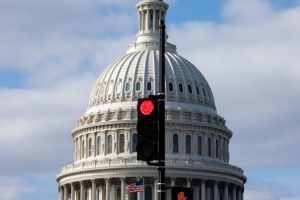( Spanish) – To understand the electoral process effectively, one must know how the electoral process operates. electoral system in the United States, which is based on the popular vote and the electoral vote. This system not only determines the election of the president, but also shows how citizens participate in the outcome of the election.
Many confuse the popular vote with the electoral vote. A candidate can win the popular vote and still lose in the electoral vote, which would prevent him from being president. The key difference is that the popular vote is cast by citizens, while the electoral vote is determined by the institutional system. The electoral vote is what determines the winner of the presidency.
According to him official government site The Electoral College is not a physical place, but a process that encompasses several stages. First, the selection of voters takes place. Electors then gather to cast their votes for president and vice president. And finally, Congress is in charge of counting the votes cast by the voters.
The reasons why constitutionalists chose this system are several. First, there was concern about factions and lack of information among voters. They did not want to dictate to the states how to conduct their elections and feared that the most populous states would choose the president, so the Electoral College was established as a compromise.
Each state has a equivalent number of voters to members in Congress, which includes both the House of Representatives and the Senate. This means that, when including the three electors of the city of Washington, the total amounts to 538 voters.
More than 150 million people are likely to cast their votes to elect the president on or before Election Day. But there will be 538 electors who will elect the president in a process that will last throughout December and January.
When voters cast their ballots, they are actually selecting a list of electors tied to the candidate who wins the popular vote in each state.
Electors will then cast their votes to elect president and vice president at each state capitol on December 17. That meeting is also known as the Electoral College and is mandatory under the Constitution.
Those electoral votes will be counted in the House of Representatives on January 6, 2025, as the new Congress watches.
The new president will take office on January 20, 2025.
The elector system assigns one representative for each member of the House of Representatives (435) and the Senate (100), in addition to three electors for the District of Columbia, the city of Washington.
On the other hand, all states receive a minimum of three electors. California, being the most populous state, has 53 representatives and two senators, giving it a total of 55 electoral votes. In contrast, Texas—with a strong Republican leaning—has 36 congressmen and two senators, resulting in 38 electoral votes.
Likewise, there are six states—Alaska, Delaware, Montana, North Dakota, Vermont, and Wyoming—that, due to their low populations, only have one representative each, and have a minimum of three electoral votes. The District of Columbia also has three. In contrast, residents of Puerto Rico and other non-state territories do not have access to electoral votes, although they can participate in presidential primaries.
To achieve a majority in the Electoral College, 270 votes are required. The total number of voters, which totals 538, can only be modified if more legislators are added or through a constitutional amendment. However, the number of electors assigned to each state can change every ten years after the Census.
The redistribution of seats in the House is carried out according to changes in the population. Some states may gain or lose seats, but none may be left without representation in Congress. This issue has sparked intense debate over whether the US Census should include a citizenship question, as there are concerns about how this could affect the accuracy of the count and the representation of states with large immigrant populations in future elections. after the 2020 Census.
It should be noted that in the event of a tie or none of the candidates having a majority of votes, the election is in the hands of the House of Representatives.
Each state has a delegation of legislators who vote to choose between the three main electoral candidates. Under the 12th Amendment, if there is no majority within a given period, the vice president becomes president. If there is no majority for the vice president, only the senators elect that position. The 20th Amendment changed the inauguration deadline to January 20. Most states, except Maine and Nebraska, award all of their electoral votes to the winner of the popular vote in that state.
With reporting from ‘s Zachary B. Wolf













Add Comment